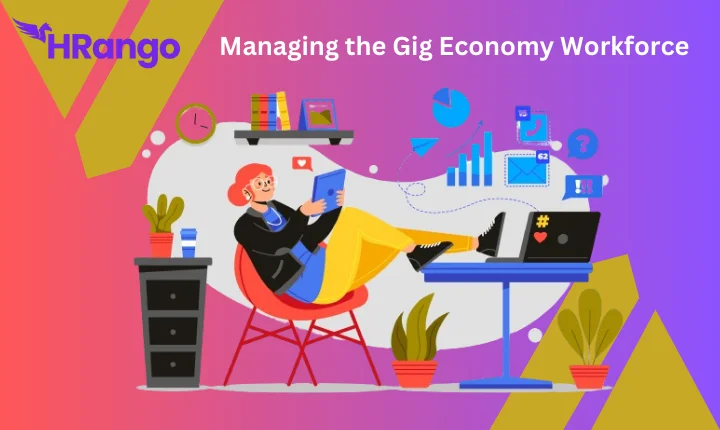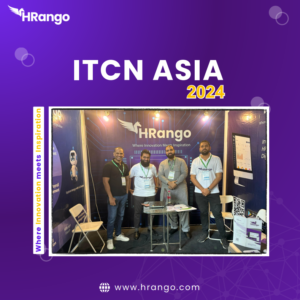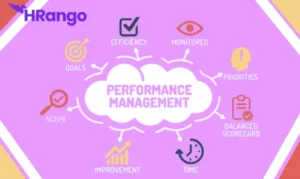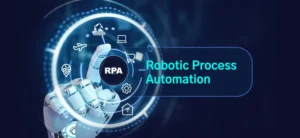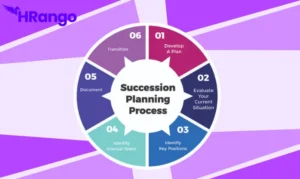The gig economy has dramatically reshaped the employment landscape in recent years, offering flexibility to workers and cost-efficiency to businesses. As companies increasingly rely on freelancers, contractors, and temporary workers to meet their needs, managing this diverse and dynamic workforce has become a significant challenge. Human Resource Management Systems (HRMS) have emerged as a crucial strategic tool for effectively managing gig workers. In this article, we’ll explore how HRMS can be leveraged to manage the gig economy workforce and reference the innovative features of hRango, a leading HRMS solution designed for modern workforce management.
Understanding the Gig Economy Workforce
The gig economy refers to a labor market characterized by the prevalence of short-term contracts or freelance work as opposed to permanent jobs. This trend has grown exponentially, driven by digital platforms that connect workers with businesses on a project-by-project basis. While the gig economy offers numerous benefits, such as flexibility for workers and scalability for businesses, it also presents challenges, including inconsistent work quality, difficulties in managing a dispersed workforce, and complexities in compliance with labor laws.
The Role of HRMS in the Gig Economy
HRMS platforms are traditionally used to manage full-time employees, but they are increasingly being adapted to handle the unique needs of gig workers. Here’s how HRMS can be a strategic tool in the gig economy:
1. Centralized Workforce Management
HRMS platforms, such as hRango, provide a centralized system to manage all types of workers, including full-time employees, freelancers, and contractors. By integrating gig workers into a unified system, companies can streamline their HR processes, ensuring that all workers are managed consistently and efficiently. hRango’s comprehensive dashboard allows managers to track the performance, availability, and project status of gig workers alongside permanent employees, providing a holistic view of the workforce.
2. Efficient Onboarding and Offboarding
One of the key challenges in the gig economy is the constant turnover of workers. HRMS platforms simplify the onboarding process by automating tasks such as document submission, contract signing, and compliance checks. hRango, for instance, offers an automated onboarding workflow that ensures gig workers can start their projects quickly, without the administrative burden on HR teams. Similarly, offboarding is streamlined, ensuring that all contractual obligations are met, and access to company systems is revoked when a project ends.
3. Accurate Time Tracking and Payroll Management
Gig workers are often paid on a per-task or hourly basis, making accurate time tracking and payroll management crucial. HRMS platforms equipped with time-tracking features allow gig workers to log their hours directly into the system, which can then be automatically synced with payroll. hRango excels in this area by offering a time-tracking module that integrates with its payroll system, ensuring that gig workers are paid accurately and on time. This reduces errors and ensures compliance with labor laws.
4. Compliance and Legal Management
Managing gig workers involves navigating a complex web of labor laws and regulations. HRMS platforms help businesses stay compliant by tracking worker classifications, ensuring that freelancers are not misclassified as employees, and managing tax obligations. hRango’s compliance module keeps track of the latest legal requirements and automatically updates policies and procedures, helping businesses avoid costly fines and legal issues.
5. Performance Management and Feedback
Unlike traditional employees, gig workers often work remotely and may not have the same level of engagement with the company. HRMS platforms provide tools for performance management, allowing managers to set clear expectations, provide regular feedback, and track the performance of gig workers. hRango’s performance management features enable companies to create customized evaluation criteria for gig workers, ensuring that they are evaluated based on relevant metrics. This helps maintain high standards of work quality and fosters a culture of continuous improvement.
6. Talent Pool Management
In the gig economy, businesses often work with the same freelancers or contractors on multiple projects. HRMS platforms help companies build and manage a talent pool of gig workers, allowing them to quickly find and rehire top performers for future projects. hRango offers a robust talent management feature that stores detailed profiles of gig workers, including their skills, past projects, and performance evaluations. This makes it easy for companies to match the right workers with the right projects, enhancing efficiency and reducing the time spent on recruitment.
hRango: A Case Study in Managing Gig Workers
hRango, a cutting-edge HRMS solution, is designed with the needs of the modern workforce in mind, making it particularly well-suited for managing gig workers. Its comprehensive features, from automated onboarding to time tracking and compliance management, provide businesses with the tools they need to efficiently manage a diverse workforce. By leveraging hRango, companies can ensure that their gig workers are integrated into their overall HR strategy, leading to better outcomes for both the business and the workers.
Conclusion
The gig economy is here to stay, and businesses that want to thrive in this new landscape need to adapt their HR practices accordingly. HRMS platforms like hRango offer a strategic solution to the challenges of managing gig workers, providing the tools needed to streamline processes, ensure compliance, and maintain high standards of work quality. By integrating gig workers into a centralized HRMS, businesses can unlock the full potential of the gig economy and build a more agile, efficient, and effective workforce.
FAQs
What is the gig economy?
The gig economy refers to a labor market where temporary, flexible jobs are common, and companies hire freelancers or independent contractors for short-term engagements.
How can HRMS help manage gig workers?
HRMS platforms streamline the management of gig workers by centralizing tasks such as onboarding, time tracking, payroll, and compliance management, making it easier to manage a diverse workforce.
What makes hRango suitable for managing gig workers?
hRango offers features tailored to the gig economy, including automated workflows, compliance tracking, and performance management tools, making it an ideal HRMS for businesses relying on freelance talent.
Can HRMS platforms help with legal compliance in the gig economy?
Yes, HRMS platforms help ensure that businesses comply with labor laws by tracking worker classifications, managing tax obligations, and updating policies in line with legal requirements.
How does HRMS enhance performance management for gig workers?
HRMS platforms enable managers to set clear expectations, provide regular feedback, and track performance based on customized criteria, ensuring that gig workers maintain high standards of work quality.

